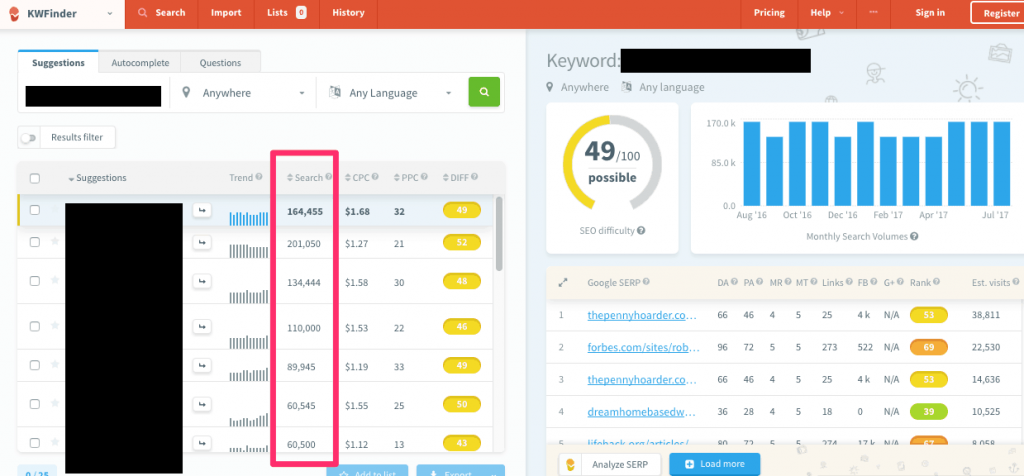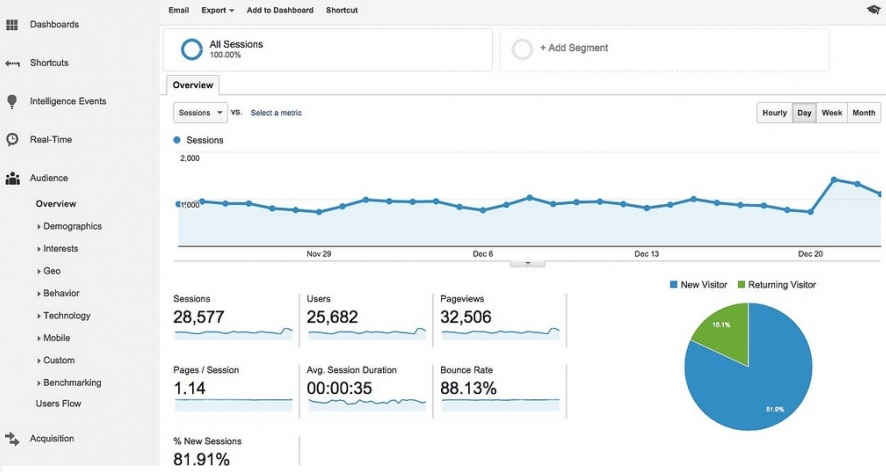how to start a niche blog
In the ever-expanding digital landscape, starting a niche blog can be a rewarding venture both personally and professionally. Niche blogs allow you to focus on specific topics that you are passionate about, attracting a dedicated audience. If you’re ready to dive into the world of niche blogging, follow this step-by-step guide to set yourself up for success.Here we will discussed about how to start a niche blog.
1. Discover Your Passion and Niche:
Before you start your blog, identify your passions and interests. Consider what you genuinely enjoy and what you are knowledgeable about. This will be the foundation of your niche blog. Research potential niches to ensure there is an audience interested in your chosen topic.
2. Conduct Thorough Keyword Research:
Utilize keyword research tools to identify relevant and high-volume keywords in your niche. This will not only guide your content creation but also help you understand what your target audience is searching for. Incorporate these keywords naturally into your blog posts to improve search engine visibility.Kwfinder is one of the best tools for that.

3. Choose a Memorable Domain Name:
Selecting a domain name that reflects your niche and is easy to remember is crucial. Keep it short, relevant, and avoid using complex words. A memorable domain name contributes to brand recognition and makes it easier for visitors to find your blog.
4. Set Up Your Blogging Platform:
Choose a reliable blogging platform such as WordPress, Blogger, or Medium. These platforms offer user-friendly interfaces and customizable templates, allowing you to create a professional-looking blog without extensive technical knowledge. Better if you choose a hosting and install wordpress to start writing the blog. For hosting bluehost is one of the best choice.
5. Design a Clean and User-Friendly Layout:
Ensure your blog has a clean and intuitive design. A clutter-free layout with easy navigation enhances the user experience. Optimize your blog for both desktop and mobile users to reach a broader audience.
6. Create High-Quality, Original Content:
Produce valuable and original content that resonates with your audience. Aim for in-depth articles, how-to guides, and engaging multimedia content. Be consistent with your posting schedule to keep your audience engaged and attract new readers.
7. Build a Social Media Presence:
Promote your niche blog on social media platforms relevant to your audience. Share your content, engage with your followers, and participate in discussions within your niche community. Social media is a powerful tool for driving traffic to your blog.

8. Implement SEO Best Practices:
Optimize your blog posts for search engines by including relevant keywords, meta tags, and descriptive alt text for images. Create a sitemap and submit it to search engines to ensure your blog is indexed and easily discoverable.
9. Monetize Your Blog:
Explore various monetization strategies such as affiliate marketing, sponsored posts, and selling digital products. Choose methods that align with your niche and provide value to your audience. Building a diverse income stream will contribute to the sustainability of your blog.
10. Engage with Your Audience:
Respond to comments, emails, and messages from your audience. Building a sense of community around your niche blog is essential for long-term success. Encourage discussions, ask for feedback, and make your readers feel valued.
11. Develop a Unique Brand Identity:
Create a recognizable brand for your niche blog. This includes designing a distinctive logo, choosing a consistent color palette, and developing a unique writing style. A strong brand identity helps your blog stand out and fosters a sense of trust among your audience.
12. Collaborate with Other Bloggers:
Network with other bloggers in your niche. Collaboration can take various forms, such as guest posts, joint projects, or social media takeovers. This not only expands your reach but also adds credibility to your blog within the community.
13. Stay Updated on Industry Trends:
Keep abreast of the latest trends and developments in your niche. Regularly update your content to reflect changes or new information. This demonstrates to your audience that your blog is a reliable source of current and relevant information.
14. Build an Email Subscriber List:
Encourage visitors to subscribe to your blog through an email newsletter. This direct communication channel allows you to share updates, exclusive content, and promotional offers directly with your audience. A loyal subscriber base can become a valuable asset over time.
15. Optimize for Mobile Users:
Given the increasing number of users accessing the internet via mobile devices, ensure that your blog is mobile-friendly. Responsive design and fast loading times on mobile devices contribute to a positive user experience and can positively impact your search engine rankings.
16. Analyze and Adjust:
Regularly analyze your blog’s performance using tools like Google Analytics. Track key metrics such as traffic, user behavior, and popular content. Use this data to make informed decisions, refine your content strategy, and optimize for better results.
17. Offer Value Beyond Text:
Diversify your content by incorporating multimedia elements. This could include infographics, videos, podcasts, or interactive elements. Different formats appeal to different audience preferences, increasing the overall appeal and accessibility of your blog.
18. Develop a Content Calendar:
Plan your content in advance by creating a content calendar. This helps you stay organized, maintain a consistent posting schedule, and ensures that your content aligns with seasonal trends or events in your niche.
19. Leverage Long-Tail Keywords:
In addition to focusing on high-volume keywords, incorporate long-tail keywords into your content. Long-tail keywords are more specific and can attract a targeted audience interested in niche topics, increasing the likelihood of conversion.
20. Stay Authentic and Transparent:
Authenticity builds trust with your audience. Be transparent about your experiences, successes, and challenges. Share personal anecdotes and insights, allowing your readers to connect with you on a more human level.
21. Implement Internal and External Linking:
Include both internal links (links to other relevant pages within your blog) and external links (links to reputable external sources) in your content. This not only helps with SEO but also provides additional value to your readers by offering more in-depth information.
22. Utilize Social Proof:
Highlight positive feedback, testimonials, or case studies related to your niche. Social proof adds credibility to your blog and encourages new visitors to explore your content with confidence.
23. Offer Exclusive Content for Subscribers:
Incentivize people to subscribe to your email list by offering exclusive content, such as downloadable resources, e-books, or access to a members-only area on your blog. This can significantly boost your subscriber base.
24. Conduct Surveys and Polls:
Engage with your audience by conducting surveys or polls. This not only helps you understand your audience better but also allows them to feel involved in the direction of your blog. Use the insights to tailor your content to their preferences.
25. Optimize Images for SEO:
Ensure that the images on your blog are optimized for search engines. Use descriptive file names, include alt text, and compress images to improve page loading speed. This contributes to a better overall user experience.
26. Participate in Online Communities:
Join forums, social media groups, and other online communities related to your niche. Actively participate in discussions, share your expertise, and subtly promote your blog when relevant. This can drive targeted traffic and establish you as an authority in your niche.
27. Create Evergreen Content:
While staying current is essential, also focus on creating evergreen content that remains relevant over time. Evergreen content provides long-term value, attracts consistent traffic, and can be updated periodically to reflect changes in your niche.
28. Invest in Professional Design:
Consider investing in professional design elements for your blog. A visually appealing and cohesive design not only improves user experience but also contributes to the overall credibility of your brand.
29. Develop a Link-Building Strategy:
Earn backlinks from reputable websites in your niche. Quality backlinks can significantly boost your blog’s authority and search engine rankings. Guest posting on other blogs is one effective way to build these valuable links.
30. Stay Compliant with Legal Requirements:
Familiarize yourself with legal aspects such as copyright laws, privacy policies, and terms of service. Ensure your blog is compliant with these regulations to protect yourself legally and build trust with your audience.
By incorporating these additional tips into your niche blog strategy, you’ll be well on your way to creating a successful and sustainable online presence. Keep refining your approach based on the evolving needs of your audience and the dynamics of your niche. Happy blogging!
31. Conduct Competitor Analysis:
Regularly analyze other successful blogs in your niche. Understand what they are doing well and identify any gaps or opportunities that you can capitalize on. This can provide valuable insights for refining your own content and strategy.
32. Host Webinars or Live Q&A Sessions:
Engage with your audience in real-time by hosting webinars or live Q&A sessions. This interactive approach allows you to connect with your audience directly, address their questions, and showcase your expertise.
33. Utilize Influencer Collaborations:
Partner with influencers or thought leaders in your niche for collaborations. This can involve co-authored content, interviews, or social media takeovers. Influencer collaborations can expand your reach and introduce your blog to a broader audience.
34. Implement a Strong Call-to-Action (CTA):
Guide your readers on the next steps by incorporating clear and compelling calls-to-action. Whether it’s subscribing to your newsletter, sharing the content, or making a purchase, a well-crafted CTA encourages user engagement.
35. Optimize for Voice Search:
With the rise of voice-activated devices, optimize your content for voice search queries. Focus on natural language, long-tail keywords, and providing concise answers to common questions relevant to your niche.
36. Create a Resource Page:
Compile a comprehensive resource page on your blog that serves as a go-to guide for your audience. Include links to your best and most relevant content, recommended tools, and other valuable resources within your niche.
37. Utilize Social Media Advertising:
Consider using paid advertising on social media platforms to promote your niche blog. Target your advertisements to specific demographics interested in your niche to maximize the impact of your campaigns.
38. Develop a Mobile App:
If your niche blog gains significant traction, explore the possibility of developing a mobile app. Having a dedicated app can enhance user experience and provide another avenue for your audience to access your content.
39. Conduct Keyword Refreshes:
Regularly revisit and refresh your old content with updated information and keywords. This not only keeps your blog relevant but also signals to search engines that your content is current and valuable.
40. Stay Adaptable to Algorithm Changes:
Search engine algorithms and digital trends evolve. Stay informed about algorithm changes and adapt your SEO and content strategies accordingly. Being flexible and proactive will help you maintain and improve your blog’s visibility.
Remember, building a successful niche blog is an ongoing process that requires dedication, adaptability, and a genuine commitment to providing value to your audience. As you implement these tips, continually assess their effectiveness and adjust your approach based on the feedback and data you receive. Happy blogging!
Remember, the key to a successful niche blog is a combination of passion, consistency, and adaptability. Stay dedicated to your niche, listen to your audience, and be open to evolving your strategies as your blog grows. Good luck with your niche blogging journey!
Starting a niche blog requires dedication, consistency, and a genuine passion for your chosen topic. By following these steps and staying committed to providing valuable content, you can create a successful niche blog that resonates with your audience and stands out in the digital realm. Happy blogging!






